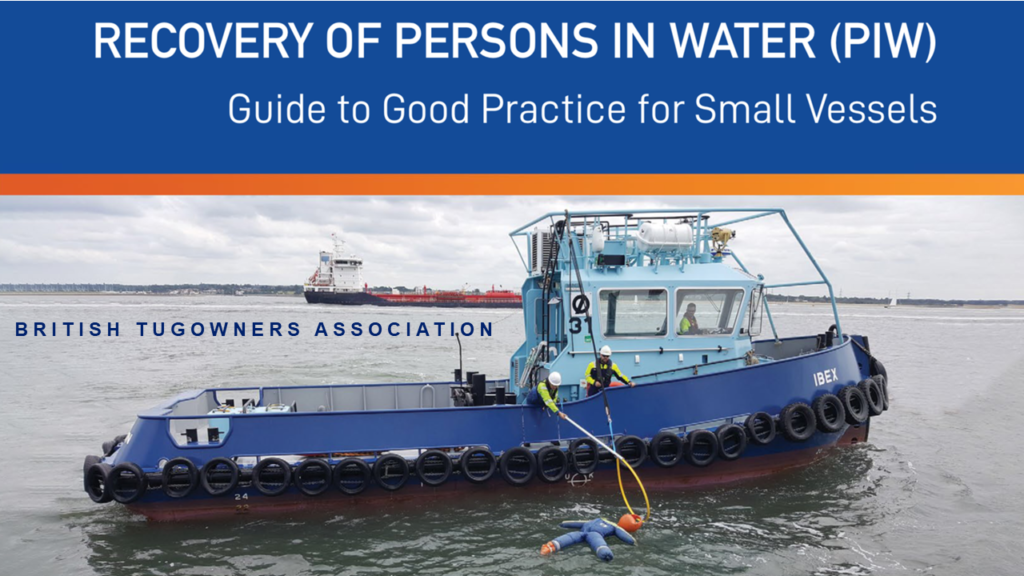The British Tugowners Association are pleased to release to industry is latest guidance release, Recovery of Persons in Water (PIW) Guide to Good Practice for Small Vessels.
The Guide to Good Practice is available as a free pdf for use across the industry.
The BTA Chairman, Scott Baker from Svitzer, when releasing the Guide at the BTA’s Annual Safety Seminar on 10 November, stated that
“The guide looks to debunk and demystify various myths and fallacies within the industry, spurring on open debate and discussion with the intent being to save lives. For their expertise and input the BTA extends special thanks to Paul Savage OBE, Managing Director Saviour Medical Ltd, Professor Mike Tipton MBE from University of Portsmouth, and the Workboat Association Safety Forum.”
The intent of the guide is not limited to tugs but applicable across the small boat sector, whether crew transfer vessels, pilot cutters, workboats or tugs, many of which share similar characteristics and equipment.
The BTA’s Technical Committee has for over a year been working on reviewing the task of recovering people from the water to small vessels and appraising the equipment typically found in the small vessel sector. The end goal being to arrive at a complementary suite of equipment which can be used to effect a rescue across the four stages of recovery.
- Making a connection to the casualty
- Getting the casualty under control
- Recovery of the casualty to the deck
- Medical care and post rescue support on board
Key areas of discussion:
- the ineffectiveness and potential of lifejackets without crotch straps
- Cold Water Immersion, its effects and incorrect confusion with hypothermia
- the truth around vertical and horizontal rescue
- protection for the rescuer(s) on board
- demystifying Automatic External Defibrillators (AEDs)
- post recovery trauma and support
- standardising the handover/transfer of the casualty to emergency services (ATMIST)
The guide stresses the importance of effective and realistic drills and training, a historical idea captured by Archilochus c. 650 BC who wrote, “We do not rise to the level of our expectation; we fall to the level of our training”, yet repeatedly is found to be wanting in accident reports and investigations.
Professor Mike Tipton MBE, FTPS, from the Extreme Environments Laboratory, at the University of Portsmouth provided the foreword, commenting:
“Immersion in cold water represents a serious threat to life. But this threat can be significantly reduced with the correct knowledge, procedures, equipment, and training. This comprehensive guide provides the information needed to significantly reduce the chances of a tragedy if an individual goes overboard. It follows that reading this guide, and implementing the recommendations contained herein could, quite literally, be lifesaving.
In the area of cold water survival, knowledge = survivability.
I commend this Guide to Good Practice to you, and the knowledge it provides.”
Download the Good Practice Guide here
The BTA wish for the Guide to be an iterative document, which will be reviewed and updated over time. As such, feedback and comments are invited to the Secretariat at rmerrylees@ukchamberofshipping.com.
The GTGP follows earlier publications for the BTA Technical Committee which include the Second Edition of the Pilot’s Pocket Guide and Checklist, released January 2022 (available here), and the BTA’s Rope Selection, Procurement and Usage Guidance for Tow Ropes, released July 2021 (available here).

